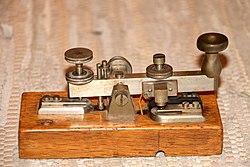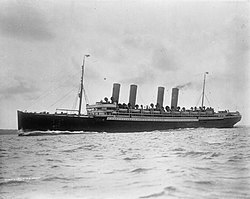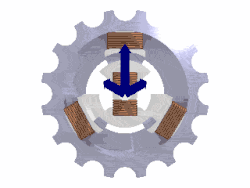Second Industrial Revolution
The Second Industrial Revolution was a period when advances in steel production, electricity and petroleum caused a series of innovations that changed society. With the production of cost effective steel, railroads were expanded and more industrial machines were built. Women become a bigger part of the work industry, getting jobs as white collar workers including secretaries and clerks.
Also it was the period when many cities got clean water supplies. This controlled cholera epidemics and other water-carried diseases.[1] This revolution transformed much of the world. It was ended by World War I.[2]
Second Industrial Revolution Media
A telegraph key used to transmit text messages in Morse code
The ocean liner SS Kaiser Wilhelm der Grosse, a steamboat. As the main means of trans-oceanic travel for more than a century, ocean liners were essential to the transport needs of national governments, commercial enterprises and the general public.
A diagram of the Bessemer converter. Air blown through holes in the converter bottom creates a violent reaction in the molten pig iron that oxidizes the excess carbon, converting the pig iron to pure iron or steel, depending on the residual carbon.
The Barrow Hematite Steel Company operated 18 Bessemer converters and owned the largest steelworks in the world at the turn of the 20th century.
A rail rolling mill in Donetsk in 1887
Three-phase rotating magnetic field of an AC motor. The three poles are each connected to a separate wire. Each wire carries current 120 degrees apart in phase. Arrows show the resulting magnetic force vectors. Three phase current is used in commerce and industry.
The BASF-chemical factories in Ludwigshafen, Germany, in 1881
HMS Devastation, built in 1871, as it appeared in 1896
Related pages
References
- ↑ see Joseph Bazalgette
- ↑ James Hull 1999. "The Second Industrial Revolution: the history of a concept", Storia Della Storiografia, issue 36, pp 81–90.









